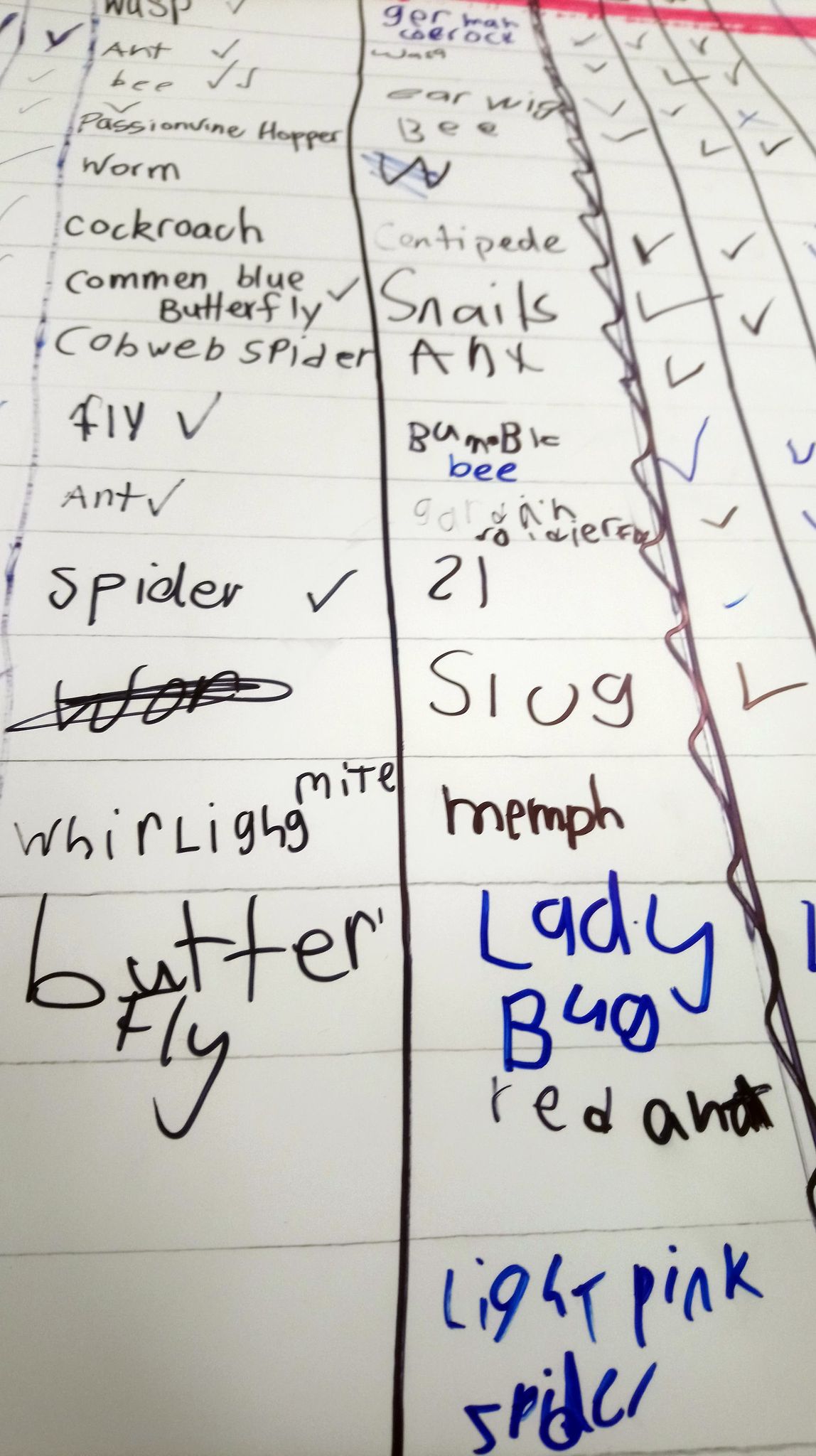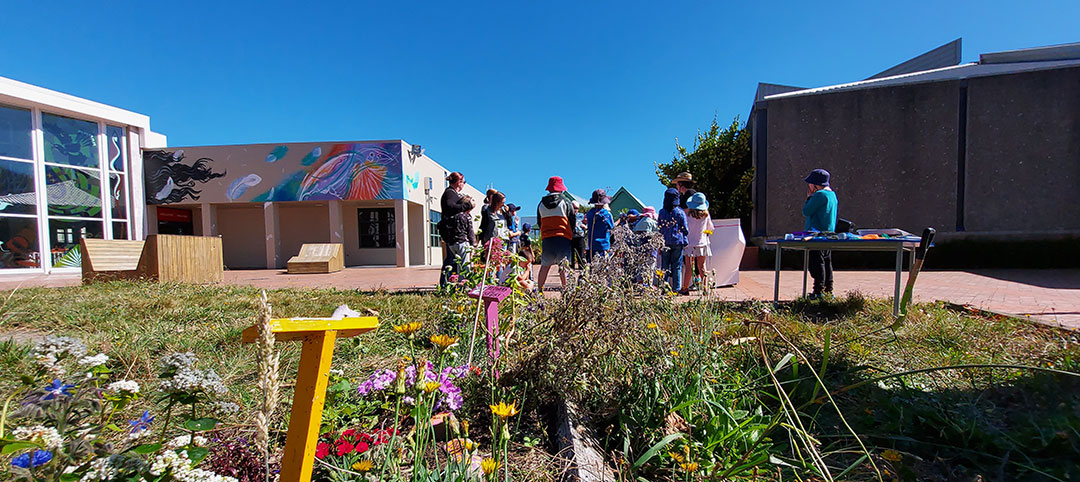During BUGS! Our Backyard Heroes, the Learning team built a bug magnet: in the Te Manawa courtyard we grew – and overgrew – a garden. This let visiting learners to take part in an ecological field study as citizen scientists. We had 19 groups take part in the study, examining the diversity of insect life in our small corner of nature and recording data.
We talked about biodiversity, ecological niches, the food chain, the complexity of the ecosystem, field study science and how and why we would like to attract bugs into our lives (I also told a bunch of kids to go home and tell their caregivers to stop mowing a section of the lawn! Ha!).
The short time that our learners are with us makes it hard for us to do anything that is not instant. This programme was presented as being part of a bigger study, or a citizen science approach to data collection. We will be providing the data from our findings to the teachers to use in a number of different ways.
Data is an interesting thing, and when you give children permission to identify and record information the results are just as interesting!
As this was more a lesson in ecological field work rather than a genuine study of the insect garden I allowed the kids to record the data as they wanted.
Some points to note: many of the groups recorded that they saw ‘moths’ which is interesting as we were always doing the study during the day – the reason being that children would universally identify passionvine hoppers as moths)
We did have a lot of Monarch butterflies live their formative lives out in the garden though this data was not captured due to the majority of the monarch action occurring outside of the school term.
The data is pretty interesting! I made this graphic to send along with the raw data. The number represents the number of groups (out of 19) who reported seeing this kind of bug.
There are heaps of interesting ways to look at the info. We saw seasonal changes in populations due to half of the studies occurring before the Christmas/summer break and the other half in the new year. Roughly speaking, a spring study versus an autumn study.
In total we saw 48 different species of ‘bugs’ in our garden – pretty impressive for an inner-city square of nature!
Now the big question is what are we to do with the garden post-BUGS!? Any ideas? I’m keen to make this space work for other programmes and visitors. Let me know what you think!

“Light Pink Spider”! I loved the details the children recorded with some entries




